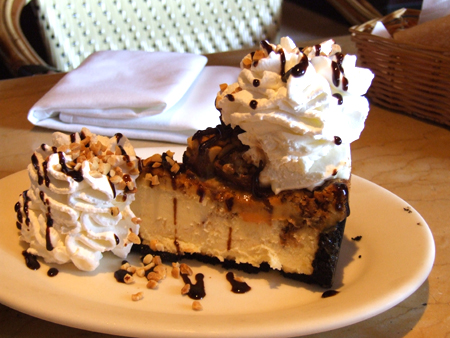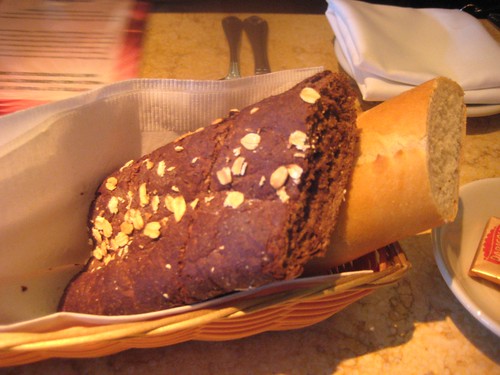To create more value for the customer, the company needs to help the customer build emotional connections with the product that reinforces positive associations. For example, people who buy Apple products may buy them because of the great customer service they enjoyed while going to the Apple Store, or associations with being cool, modern, and hip. And Apple achieves this through paying attention to SEMs details such as great visuals. Another example - my blog background is plain and unappealing, so right off the bat it might send negative associations to the reader, creating a bad experience.
To better illustrate how customer experiences work, I will discuss a great experience I had at the Cheesecake Factory, using some of the SEMs.

Immediately when I arrived at the restaurant, there was great sensory appeal. I was in Orlando at the time with relatives, and the Cheesecake Factory was located in a mall in the midst of all the theme parks, adorned with lights. As I walked in, the beautifully designed cheesecakes in the lit glass casings provided great visuals and anticipation for what was to come.

Inside, the lighting also created a great mood for dining and carrying out conversation with company. The Cheesecake Factory pays so much attention to the visual appeals, down to design of the menus.

Finally, the main dish arrived. It smelled great, and indeed tasted great, but when it arrived, looked great. Going back to the Coke example, while the Cheesecake Factory does have great food in terms of taste, if customers were put to a blind test, it is likely they would not be able to tell the difference between a marinated shrimp from the Cheesecake Factory and another, possibly cheaper, source. So in these ways, the Cheesecake Factory created a great sensory experience for me.
When we finished dining, the servers, who were just fine to begin with, somehow found out that it was my birthday. I was surprised when a group came over with a cup of ice-cream that mimicked a birthday cake with a lit candle on it. They asked me my name, and sang the happy birthday song for me. I made a wish and blew the candle. This definitely created an experience that was above and beyond what I expected. In this way, the Cheesecake Factory tapped into my feelings and created an emotion experience for me.
Finally, the design and atmosphere that the Cheesecake Factory creates helps its customers relate to themselves in a certain way. For example, the menus don’t show the prices of the orders, which I don’t like, but I can see how it helps create the experience of a certain social class, where price for dinner isn’t so important.
In these ways, the Cheesecake Factory really does use the experience of going to “The Cheesecake Factory” to create value for the customer. Going there is not just like going to another restaurant with good food.
